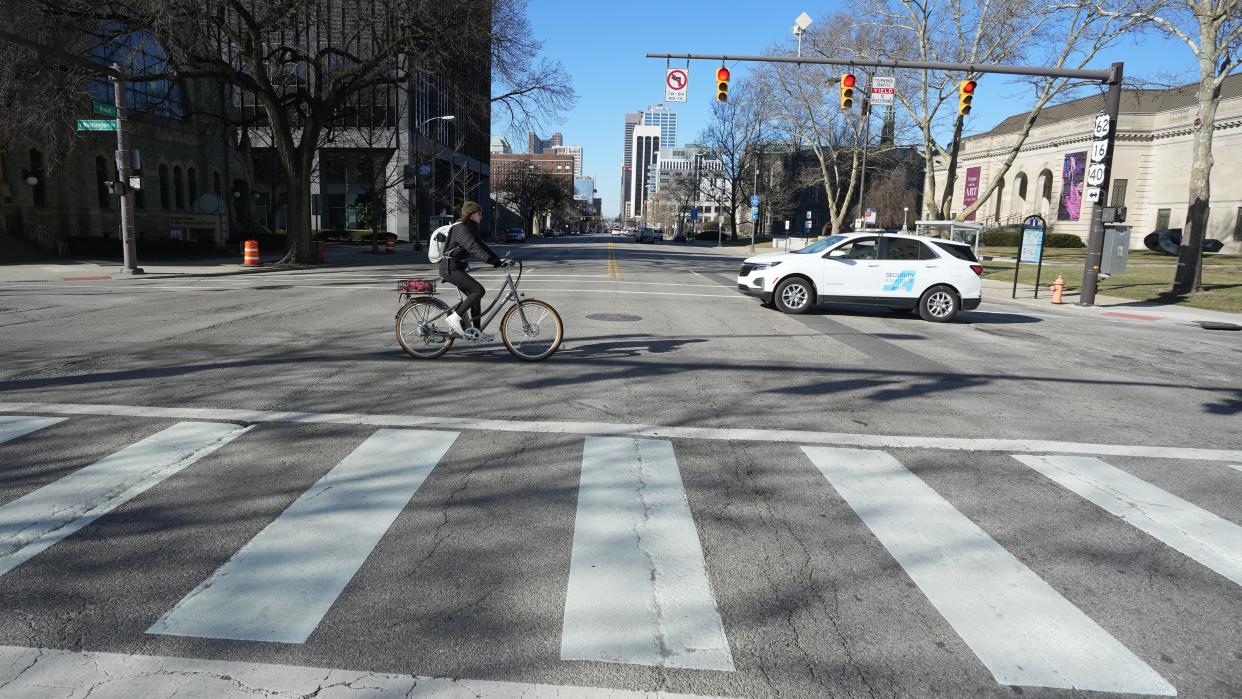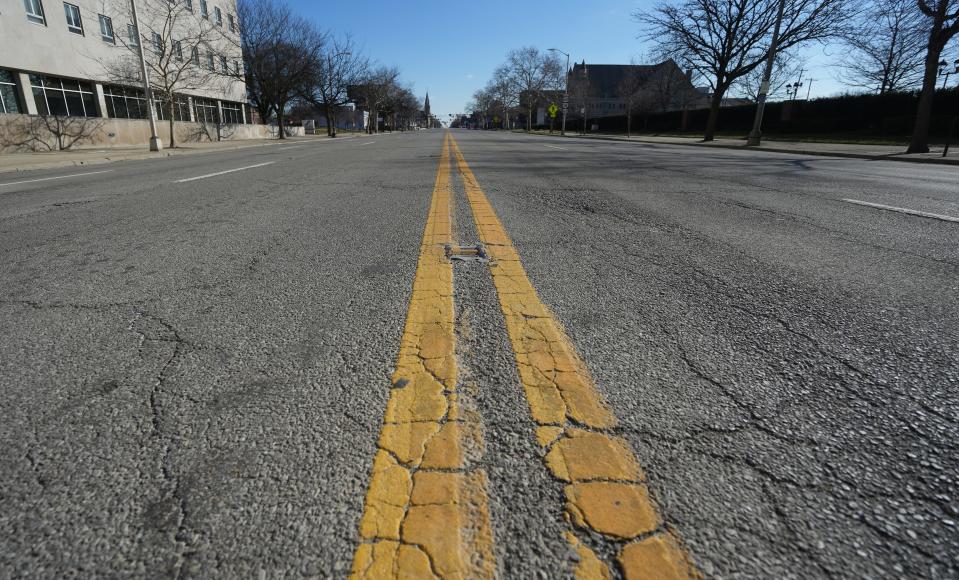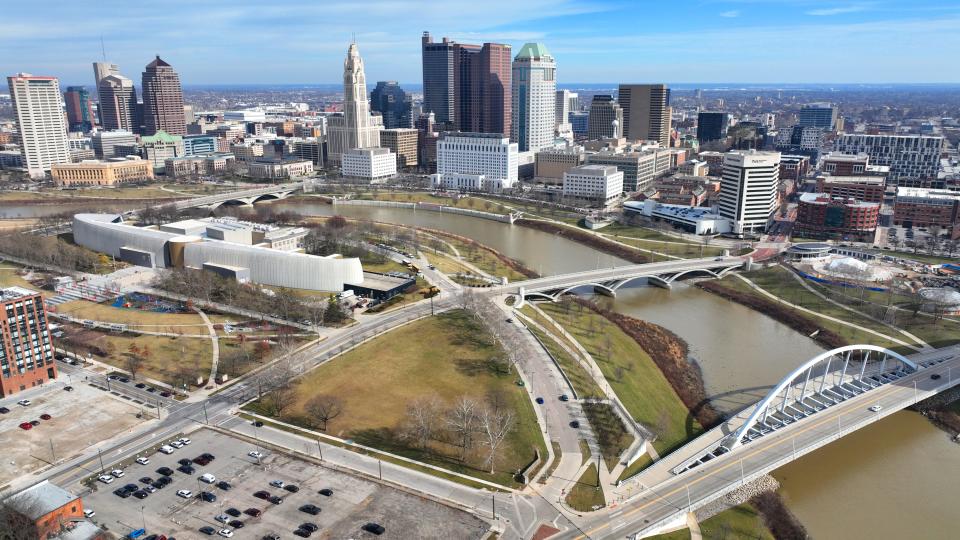State 'Super Duper Fund' to shower millions on central Ohio for projects not yet detailed.

Columbus' proposed share of at least a portion of the state's "Super Duper Fund" of leftover federal COVID-19 emergency dollars includes $10 million for a new Downtown project called the "Columbus Capital Line."
The city Public Service Department referred questions about the project to the Columbus Downtown Development Corporation, a nonprofit created by the city in 2002 to focus on Downtown strategic planning. But when The Dispatch asked the CDDC last week for any conceptual plans for the money, none were provided.
"The project is in its early stages," said Madison Cole, CDDC communications director. "We’ll be able to share more about it in the coming weeks."
But Cole did say that the project envisions "a 2-mile loop, exclusive to pedestrian and bike traffic," that would be "dotted with public art and other experiences."
What path the loop would follow isn't yet clear, but previous development plans for Downtown have called for a multi-use path along Broad Street starting just west of COSI in Franklinton and ending at Interstate 71.
That concept, called the "Broad Street Capital Trail," was outlined in a Downtown Columbus Strategic Plan from 2022, showing a two-way bike trail carved into a lane on one side of Broad Street, separated from vehicular traffic by a raised concrete planter.
The bike lanes were described as each being 5 feet wide, and the planter 3 feet wide. The plan suggests the configuration may ultimately extend east down Broad all the way to Alum Creek, at the Bexley city line.

But that plan doesn't show a "loop."
The proposed $10 million from the state was included in an Ohio House proposal advanced to the state Senate recently, but the Senate is not expected to act immediately — maybe not for months. And because the House and Senate each have their own $350 million pot of cash to divvy up, it wasn't immediately clear that the Senate couldn't allocate even more money to projects already supported by the House.
State Rep. Dave Dobos, R-Columbus, said the Capital Line is a Downtown development project to tie together the cultural area (including COSI and the National Veterans Memorial and Museum) on the west side of the Scioto River in the Franklinton area with the immediate Downtown area on the east side, then extending a couple blocks east of the Ohio Statehouse and Capitol Square.
The connection would be achieved "via streetscapes and traffic right-of-ways for auto, bike, and pedestrian traffic," Dobos said.
"The Columbus Downtown Development Corporation and the Columbus Partnership have a lot of detailed information on it," Dobos said. "It will be a transformative project for the Downtown area, somewhat similar to what Indianapolis has done."

New symphony hall also included in bill
Included in the Ohio House allocation was $10 million for a new Downtown music hall for the Columbus Symphony Orchestra, which is proposed to be built on a city-owned riverfront site immediately adjacent to the south side of COSI. The orchestra is required under the terms of a memorandum of understanding (MOU) with the CDDC, which is acting as a "mezzanine lessee" for the city in providing the public land, to present a detailed development plan by late December.
The CDDC declined to a written request submitted last week to share those required plans for city-owned land with The Dispatch, referring such requests to the orchestra. The orchestra, in turn, said it must first check with the CDDC.
The city Department of Development has not responded to a request for a copy of any plans requested last week. The MOU states that the city must be satisfied that the "goals ... are met" for the city to lease the land to the CDDC, which would sublease the land to the orchestra for 99 years.
The orchestra was required to provide the CDDC a "development plan," a schedule and budget for "design, engineering and construction," and a fundraising strategy for not just getting the more than 200,000-square-foot hall constructed, but also to "sustainably operate" it.
The CDDC — not Columbus City Council — must approve the plan, which can't be altered without the CDDC's approval, the MOU states.
While the projects were not fully described in the bill, other projects included in the Ohio House's portion of the "Super Duper Fund" for central Ohio include:
$10M - The Ohio Center for Advanced Technologies
$8M - Heritage Trail Expansion
$1M - Downtown Security Command Center
$1M - Unverferth House Revitalization and Expansion Campaign
$600K - Knoll View Place
$500K - Elevate Northland
$500K - Heartland Music Incubator
In addition to the usual state capital budget, state lawmakers for this year also created the $700 million One-time Strategic Community Investment Fund, or so-called Super Duper Fund, with the leftover windfall from federal COVID relief. The money is for transformational projects that won't require future state funds.
wbush@gannett.com
@ReporterBush
This article originally appeared on The Columbus Dispatch: Local plans for big bucks from state come with few details

